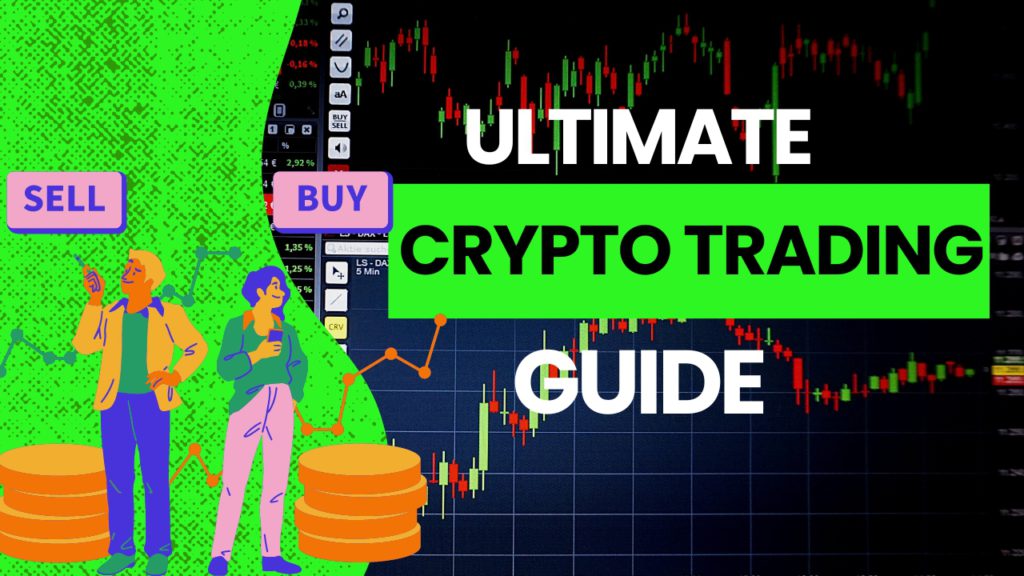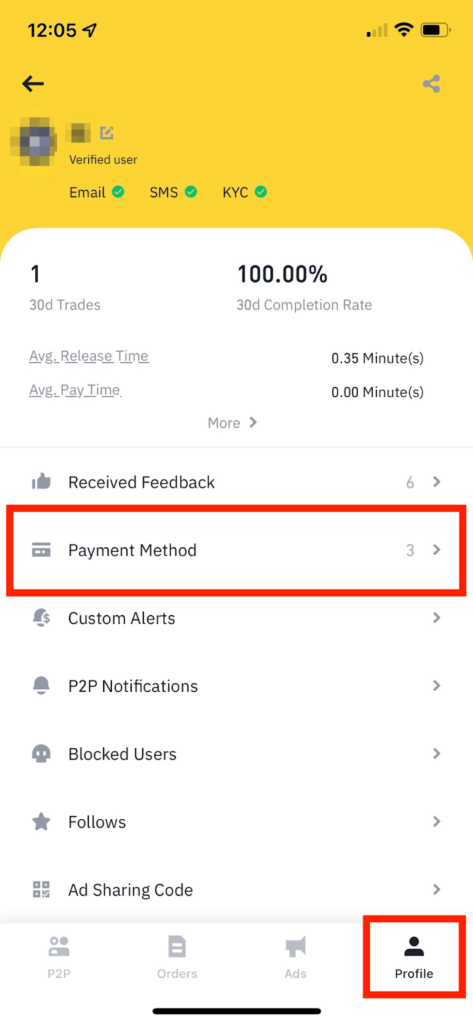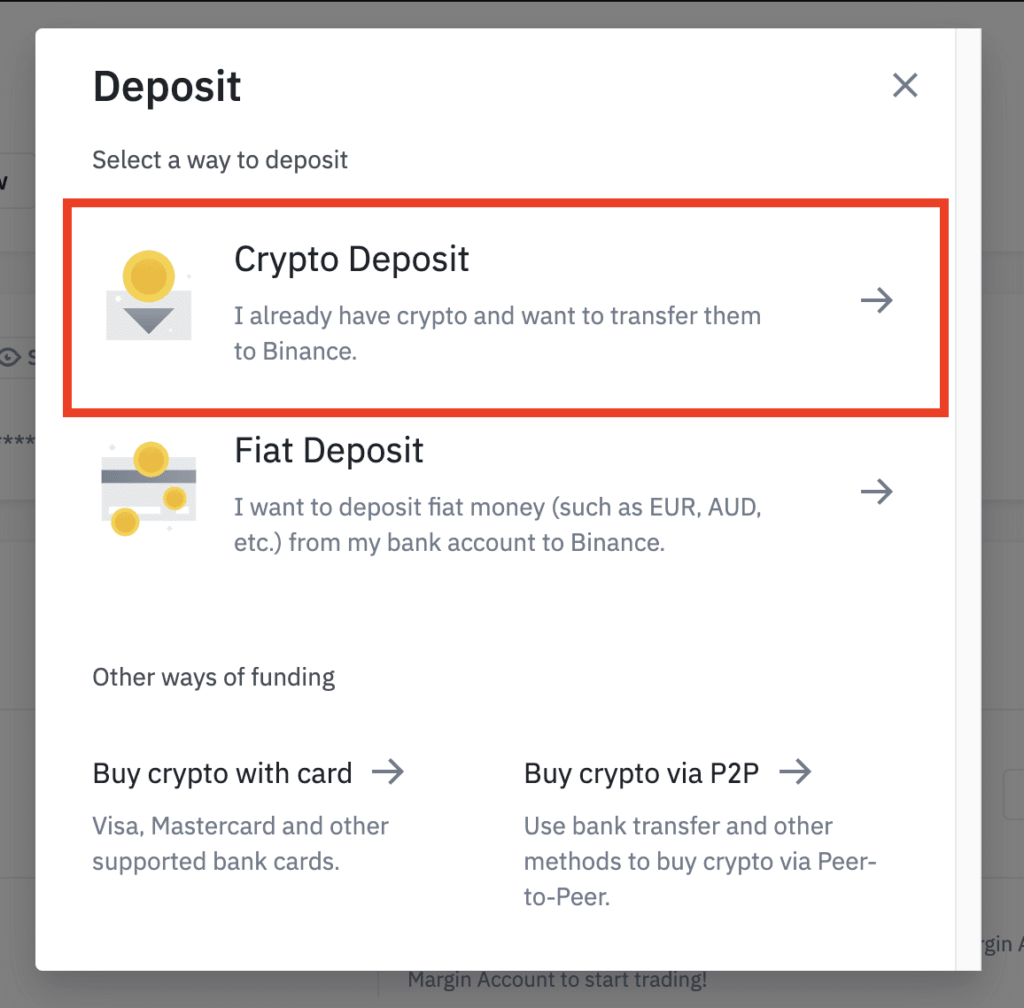Don’t worry a bit if you are entirely new to Crypto. We are here to get you kickstarted.
This crypto trading guide is designed to help you get started in the world of crypto trading.
It will cover the basics of cryptocurrencies and crypto trading. It will teach you to find the best crypto exchange for you, create an exchange account, buy and sell cryptocurrencies, and trade them for profit. It will also provide you with some tips and best practices that can help you improve your crypto trading skills and results.

By the end of this guide, you should have a solid foundation of crypto trading and be ready to explore the crypto market.
We hope you enjoy this guide and find it useful. Let’s begin!
Opening a Trading Account
First of all, you have to open a trading account for buying and selling crypto. There are many platforms to do this. But we recommend opening an account on Binance or Kucoin as they are widely used and most secure also.
- To open, the account simply click on sign up
- Add the required details like name,mobile,email etc.
- Create Your Password
- Upload the required documents for Identity Verification.
Congrats, You have successfully created your Crypto Trading account.
Let’s move on to next step
Adding Funds To Your Account
Now For buying new Cryptocurrency, you need to add funds to your account.
There are 2 methods to do so. We will discuss both methods here.
First Method:
- Go to the Payment Methods tab in Profile Section
- Now you can add your Credit/Debit card or any other supported payment method.

Second Method:
- Click on the deposit button on the home screen.
- Now you can add Fiat currency or Cryptocurrency as you like.
Fiat money is a government-issued currency that is not backed by a commodity such as gold. Examples: USD,EUR etc.
For adding Cryptocurrency, you can copy the wallet address and add the crypto.

Now,you have added funds in your account successfully, let’s move on towards placing your first order.
Placing Your First Buy and Sell Order
- For Buying any Crypto, simply choose the crypto you wish to purchase and click on the Buy button.
- Now add the amount of Crypto you want to buy.
- Ex. Add 100 in quantity if you want to purchase 100 Dogecoin.
- Click on the Buy button and pay the required amount.
- Same process goes for selling also
Different Types of Orders
- A market order is a type of order that executes as quickly as possible at the current market price.
For example, if you want to buy 1 BTC and the current price is $50,000, a market order will buy 1 BTC at $50,000 or the closest available price. A market order does not guarantee a specific price, but it guarantees a fast execution.
- A limit order is a type of order that sets the maximum or minimum price you want to trade at.
For example, if you want to buy 1 BTC but only when the price drops to $45,000, a limit order will place your order on the order book and wait for someone else to sell 1 BTC at $45,000 or lower. A limit order does not guarantee a fast execution, but it guarantees a specific price or better.
- A stop-limit order is a type of order that combines a stop order and a limit order. A stop order is an order that triggers a market order when the price reaches a certain level. A limit order is an order that sets the maximum or minimum price you want to trade at. A stop-limit order lets you specify the stop price and the limit price for your trade.
For example, if you want to sell 1 BTC when the price falls below $40,000, but not lower than $39,000, you can place a stop-limit order with a stop price of $40,000 and a limit price of $39,000. This means that when the price reaches $40,000, your order will become a limit order to sell 1 BTC at $39,000 or higher. A stop-limit order does not guarantee a fast execution or a specific price, but it gives you more control over your trade.
- An OCO (One-Cancels-the-Other) order is a type of order that combines two orders with the same quantity, where if one is executed, the other is cancelled. An OCO order on Binance consists of a stop-limit order and a limit order.
For example, if you want to buy 1 BTC when the price breaks out of a range, you can place an OCO order with a limit price of $55,000 and a stop price of $45,000 and a limit price of $44,000. This means that you will buy 1 BTC at $55,000 or lower if the price rises above $55,000, or you will buy 1 BTC at $44,000 or higher if the price falls below $45,000. An OCO order helps you to target price breakouts or decide between two options.
What is volume, market cap and price change
- Volume indicates how much trading activity and interest a cryptocurrency has in a certain time frame, usually a day. It measures the total value of all the transactions involving a crypto coin or token . For example, if Bitcoin has a volume of $50 billion, it means that in the last 24 hours, people have exchanged Bitcoin worth $50 billion.
- Market cap represents the total worth of all the coins or tokens of a cryptocurrency that are available. It is computed by multiplying the current price of a coin or token by the number of coins or tokens that exist . For example, if Bitcoin has a price of $40,000 and there are 18.8 million Bitcoins in circulation, then its market cap is $40,000 x 18.8 million = $752 billion.
- Price change shows the difference between the current price and the previous price of a cryptocurrency, usually expressed as a percentage. It reflects how much the value of a coin or token has gone up or down over time . For example, if Bitcoin has a current price of $40,000 and a previous price of $38,000, then its price change is ($40,000 – $38,000) / $38,000 x 100% = 5.26%.
What is 24h high/low and what is ATP and ATH
- 24h high/low are the maximum and minimum prices of a cryptocurrency in the past 24 hours. They indicate the price variation and instability of a coin or token in a single day . For example, if Bitcoin has a 24h high of $42,000 and a 24h low of $38,000, it means that Bitcoin’s price has changed between $38,000 and $42,000 in the past day.
- ATP means average transaction price. It is the mean price of a cryptocurrency transaction in a certain time frame. It shows the average value and size of transactions involving a coin or token. For example, if Bitcoin has an ATP of $40,000 in the past 24 hours, it means that the mean price of a Bitcoin transaction in the past day was $40,000.
- ATH means all-time high. It is the highest price that a cryptocurrency has ever achieved since its inception. It shows the peak value and popularity of a coin or token . For example, if Bitcoin has an ATH of $64,863 on April 14, 2021, it means that Bitcoin’s price reached its highest level ever on that date.
What is staking and margin
- Staking means locking up your crypto coins to get rewards. It is like earning interest on your money in the bank, but with more money and more risk. Staking helps the crypto network run smoothly and lets you have a say in how it works. Staking can be good or bad depending on the price and the rewards of the coin you stake.
- Margin trading means borrowing money from an exchange to trade more crypto coins. It is like using a credit card to buy more things, but with more profit and more loss. Margin trading helps you make more money or lose more money depending on the price movement of the coin you trade. Margin trading can be good or bad depending on the leverage and the fees of the exchange.
Here, in this crypto trading guide we will be using examples of Alice and Bob.
Here are 2 examples of staking and margin trading in crypto:
- Alice has 100 ETH and she decides to stake them on Ethereum 2.0. She locks up her ETH in a smart contract and becomes a validator for the network. She earns rewards in ETH for validating transactions and blocks. She cannot withdraw her ETH until Ethereum 2.0 launches fully or she exits the network.
- Bob has 10 BTC and he decides to margin trade them on Binance. He borrows another 10 BTC from the exchange and opens a long position with 2x leverage. He expects the price of BTC to rise. He makes a profit if the price goes up, but he loses money if the price goes down. He has to maintain a certain level of collateral or he will be liquidated by the exchange.
What is stop loss and leverage
- Stop Loss means setting a price below the current price where you will sell your crypto coins if the price goes down. It is a way of saving your money from losing too much if the price drops a lot. Stop Loss can be set by yourself or by the exchange. Some of the good things about using a stop loss are:
- You can avoid losing more money than you can afford.
- You can stay calm and not sell your coins in fear.
- You can stop your trade automatically without watching the price all the time.
- Leverage means borrowing money from the exchange to trade more crypto coins. It is a way of making more money or losing more money depending on the price change of the coin you trade. Leverage can be chosen by yourself or by the exchange. Some of the good things about using leverage are:
- You can trade more coins than you have and make more profit.
- You can use different strategies and tools to trade better.
- You can take advantage of small price movements and make big gains.
Here are some examples:
- Alice has 1 BTC and she sets a stop loss at $40,000. She expects the price of BTC to rise. If the price goes up, she makes money. If the price goes down to $40,000, she sells her BTC automatically and saves $40,000. She does not lose more than $40,000 even if the price drops lower.
- Bob has 0.5 BTC and he uses 10x leverage to trade 5 BTC. He expects the price of BTC to rise. If the price goes up by 10%, he makes $25,000 (55000) in profit. If the price goes down by 10%, he loses $25,000 (55000) in loss. He makes or loses 10 times more money than he has.
What is Fundamental and Technical Analysis
- Fundamental analysis means looking at the big picture of a crypto coin and seeing how good and useful it is based on different things, such as:
- What the project and its white paper are about and how they plan to do things
- Who are the people behind the project and who are they working with
- How many people are using the coin and how active they are
- How the coin can be used in the real world and how popular it is
- How much money the project and its coin are making and growing
Fundamental analysis helps you know if a crypto coin is worth investing in for a long time or not.
- Technical analysis means looking at the small picture of a crypto coin and seeing how its price changes and behaves based on different tools, such as:
- Charts and graphs that show the price history and trends of a cryptocurrency
- Indicators and oscillators that measure the price direction and momentum of a cryptocurrency
- Trading volume and liquidity that show the supply and demand of a cryptocurrency
- Support and resistance levels that show the price boundaries and breakouts of a cryptocurrency
- Candlestick patterns and formations that show the price action and sentiment of a cryptocurrency
Technical analysis helps you guess what the price of a crypto coin will do next and when to buy or sell it.
Here are some examples:
- Alice wants to buy Ethereum (ETH) for a long time. She does fundamental analysis by reading the white paper, finding out about the team, checking how many people use it, comparing how useful it is, and looking at how much money it makes. She thinks Ethereum is a good and helpful project with a lot of advantages. She buys ETH for the long time.
- Bob wants to buy Bitcoin (BTC) for a short time. He does technical analysis by looking at the picture, using numbers, watching the bars, finding lines, and seeing shapes. He thinks Bitcoin is going up with a lot of power. He buys BTC for the short time.
What are support and resistance
Support is a price level where the price of a crypto coin tends to bounce back up when it goes down. It is like a floor that holds the price from falling further. Support can be seen as a sign of buying pressure or demand for the coin. Some of the benefits of using support are:
- You can buy the coin at a low price and expect it to go up.
- You can set your stoploss below the support level and protect your capital.
- You can identify a possible trend reversal or continuation when the price breaks or bounces from the support level.
Resistance is a price level where the price of a crypto coin tends to drop back down when it goes up. It is like a ceiling that blocks the price from rising further. Resistance can be seen as a sign of selling pressure or supply for the coin. Some of the benefits of using resistance are:
- You can sell the coin at a high price and expect it to go down.
- You can set your take-profit above the resistance level and secure your profit.
- You can identify a possible trend reversal or continuation when the price breaks or bounces from the resistance level.
Here are some examples of support and resistance in crypto:
- Alice wants to buy Bitcoin (BTC). She looks at the chart and sees that $50,000 is a strong support level for BTC. She decides to buy BTC when it reaches $50,000 and expects it to bounce back up. She sets her stoploss at $49,000 and her take-profit at $55,000.
- Bob wants to sell Ethereum (ETH). He looks at the chart and sees that $4,000 is a strong resistance level for ETH. He decides to sell ETH when it reaches $4,000 and expects it to drop back down. He sets his stoploss at $4,100 and his take-profit at $3,800.
How to draw a trendline
A trendline is a line that you draw on a price chart to show the direction and strength of a trend. A trend is the general movement of the price of a crypto coin over time. A trendline can help you see the trend clearly and trade with it.

- To draw a trendline, you need to do these things:
- First, you need to see what kind of trend you have. There are three kinds: up, down, and sideways. An up trend is when the price goes up, a down trend is when the price goes down, and a sideways trend is when the price does not change much.
- Second, you need to find the highest and lowest points that the price reaches in the trend. You can use the sticks or the lines to find these points. You need at least two points to draw a line, but more points make it better.
- Third, you need to use a tool to draw a line on your picture. You can use any app or website that has this tool, like Good Crypto, Binance, or Bybit. You need to click on the first point and then move the line to the second point. The line should touch the highest and lowest points of the trend as much as possible, and not go through the price sticks or lines.
- Fourth, you need to make the line longer to the right. This will help you see what the price does with the line later. You can change the length and angle of the line as you want. The line should be longer until it breaks or bounces by the price.
Crypto Trading Guide: Basic Indicators
- RSI means a number that tells you how fast and strong the price of a crypto coin is changing. It can help you see if the price is too high or too low. For example, if the RSI of Bitcoin (BTC) is above 70, it means the price is too high and may go down. If the RSI of BTC is below 30, it means the price is too low and may go up.
- MACD means a line that tells you the difference between two lines that show the average price of a crypto coin over time. It can help you see the direction and speed of the price change. For example, if the MACD of Ethereum (ETH) is above zero and going up, it means the price is going up fast and strong. If the MACD of ETH is below zero and going down, it means the price is going down fast and strong.
- VWAP means a line that tells you the average price of a crypto coin based on how much it was traded. It can help you see the reasonable price and how easy it is to buy or sell the coin. For example, if the VWAP of Dogecoin (DOGE) is $0.2 and the current price is $0.25, it means the price is higher than the reasonable price and there are more buyers than sellers. If the VWAP of DOGE is $0.2 and the current price is $0.15, it means the price is lower than the reasonable price and there are more sellers than buyers.
You can read in detail about the 10 best trading indicators here.
What is ETFs and NFTs
ETFs mean funds that follow the performance of a group of crypto coins, like Bitcoin, Ethereum, and others. They are traded on stock markets like regular stocks. They can help you invest in crypto without needing to buy or store the actual coins.
Some examples of ETFs are:
- Bitwise 10 Crypto Index Fund (BITW), which follows the 10 biggest and most traded crypto coins.
- Amplify Transformational Data Sharing ETF (BLOK), which invests in companies that are involved in blockchain technology.
- VanEck Vectors Digital Transformation ETF (DAPP), which focuses on companies that provide exposure to digital assets such as cryptocurrencies, NFTs, and blockchain infrastructure.
NFTs mean unique digital tokens that show ownership of a specific item, like artwork, music, games, or collectibles. They exist on a blockchain and cannot be copied or replaced. They can help you create, buy, sell, or trade digital items with authenticity and scarcity.
Some examples of NFTs are:
- CryptoPunks, which are pixelated characters that were among the first NFTs on Ethereum.
- Beeple’s Everydays: The First 5000 Days, which is a collage of digital artworks that sold for $69 million at Christie’s auction.
- NBA Top Shot, which is a platform that sells video highlights of basketball games as NFTs.
For more trading related information and on-demand analysis related to any cryptocurrency, you can join our telegram channel.
That’s it from this crypto trading guide, stay tuned we will be uploading some more cool crypto stuff.
What is cryptocurrency trading?
Cryptocurrency trading involves buying and selling digital currencies on various online platforms. Traders aim to profit from the price fluctuations of cryptocurrencies by analyzing market trends and making informed trading decisions.
What are the risks associated with crypto trading?
Crypto trading carries certain risks, including:
Volatile market conditions: Cryptocurrency prices can change rapidly, leading to significant gains or losses.
Lack of regulations: The crypto market is relatively unregulated, which can make it more susceptible to fraud and manipulation.
Security risks: Hackers and cybercriminals may target cryptocurrency exchanges, potentially leading to the loss of funds.
Lack of knowledge: Insufficient understanding of the market and trading strategies can result in poor investment decisions.
How can I manage the risks in crypto trading?
To manage risks in crypto trading, consider the following:
Set a budget: Only invest funds you can afford to lose.
Use stop-loss orders: Implement automatic sell orders to limit potential losses.
Diversify your portfolio: Invest in multiple cryptocurrencies to spread the risk.
Stay updated: Continuously monitor the market and stay informed about news and events that may impact cryptocurrency prices.
